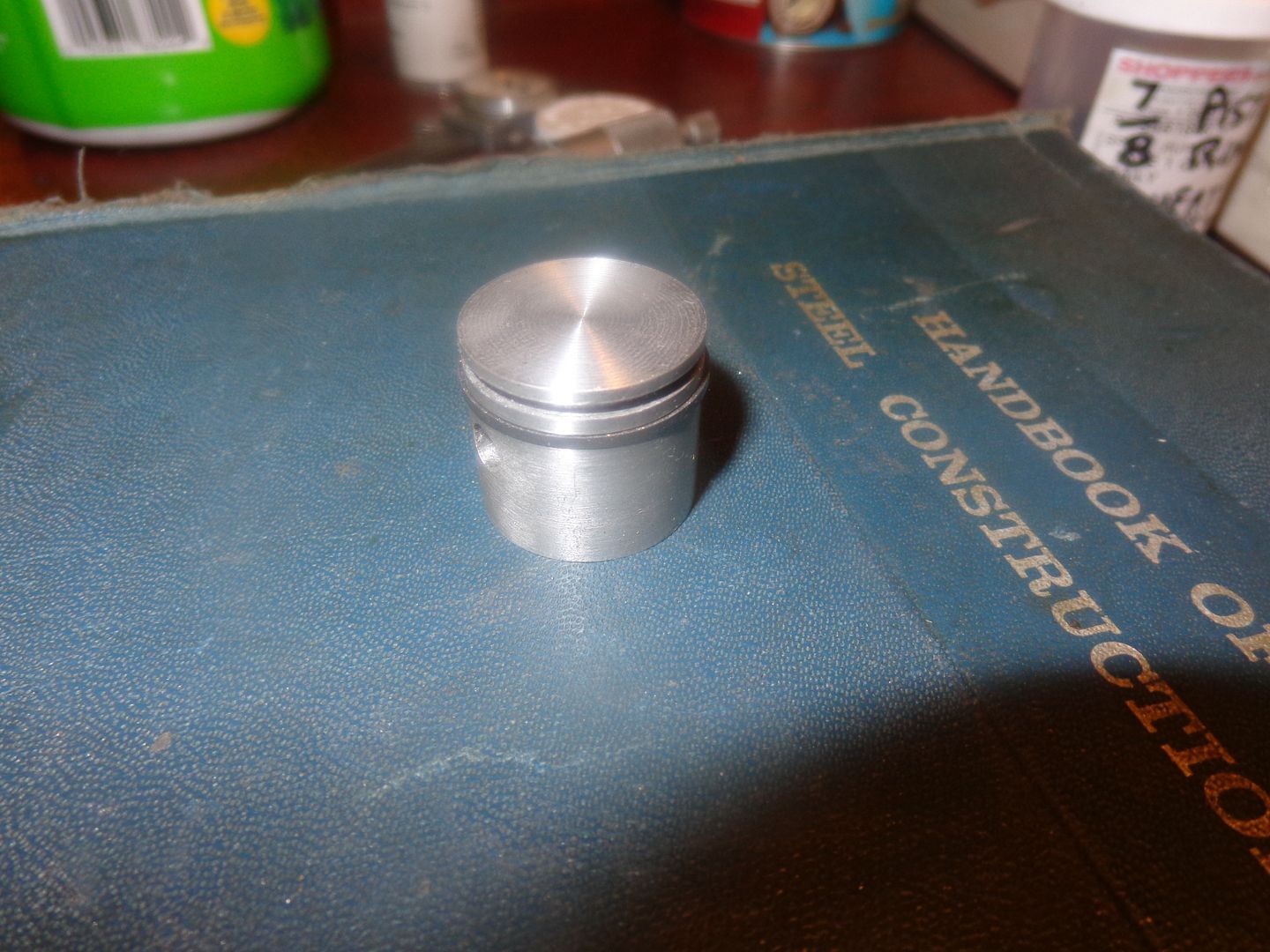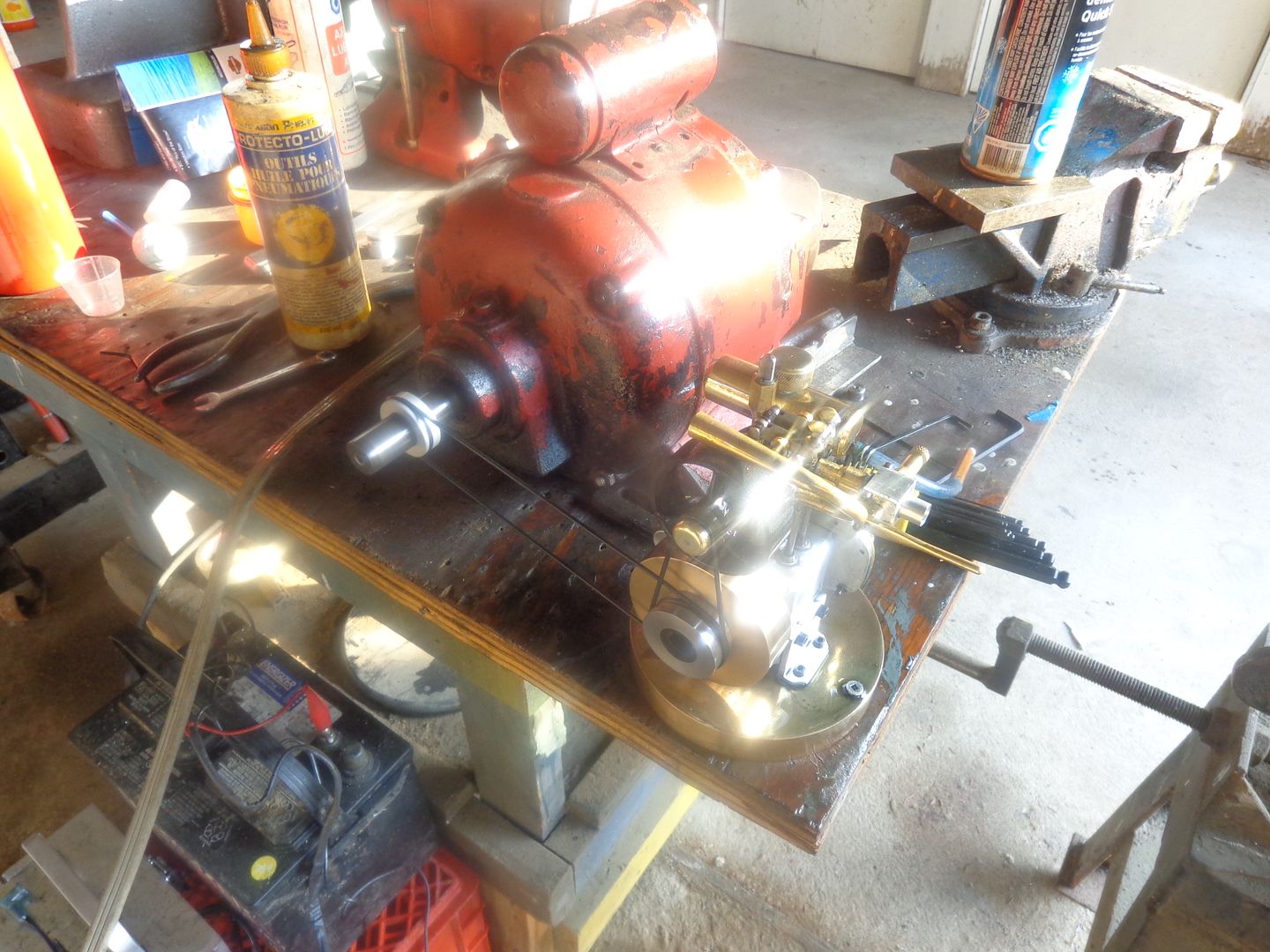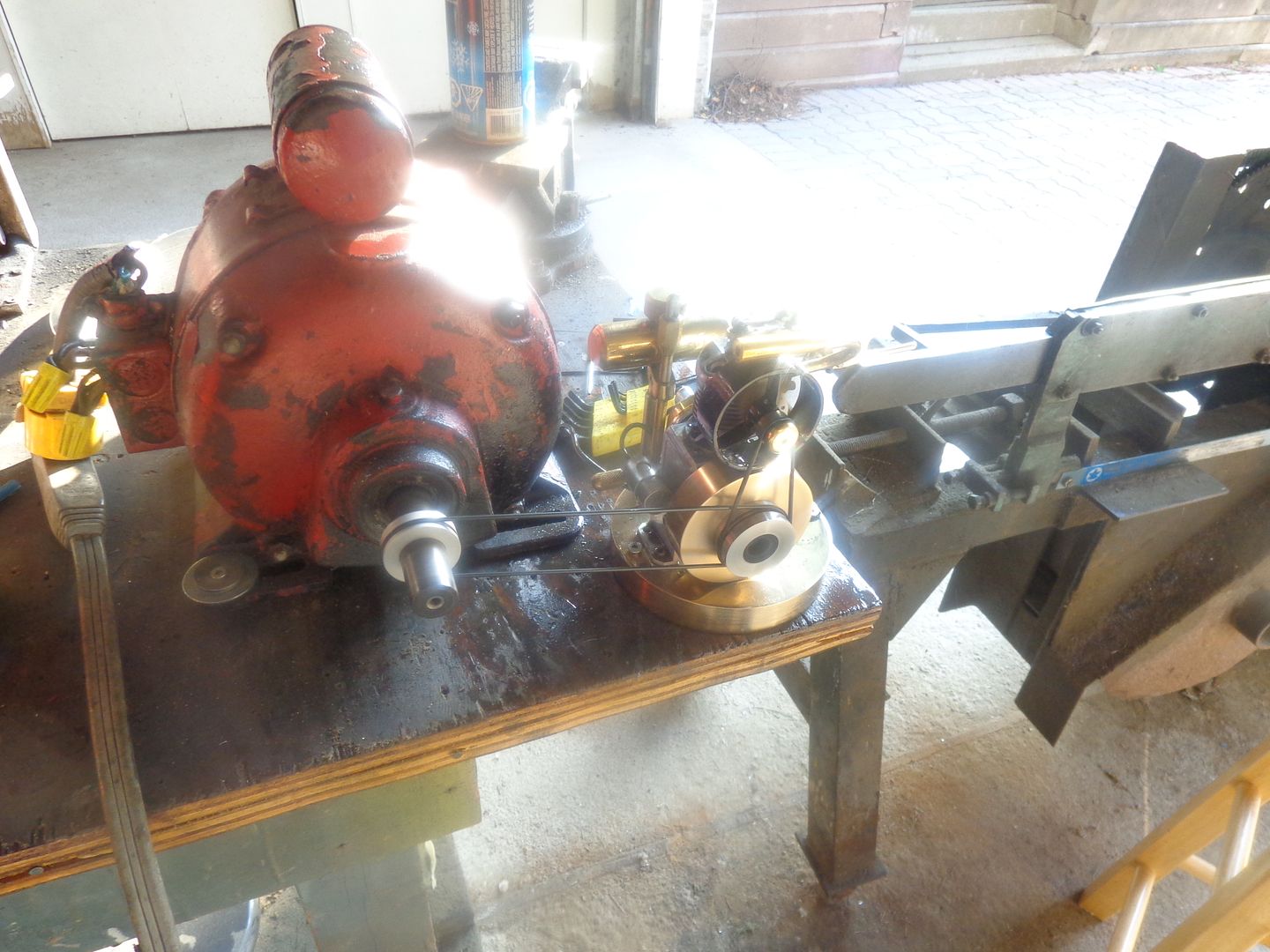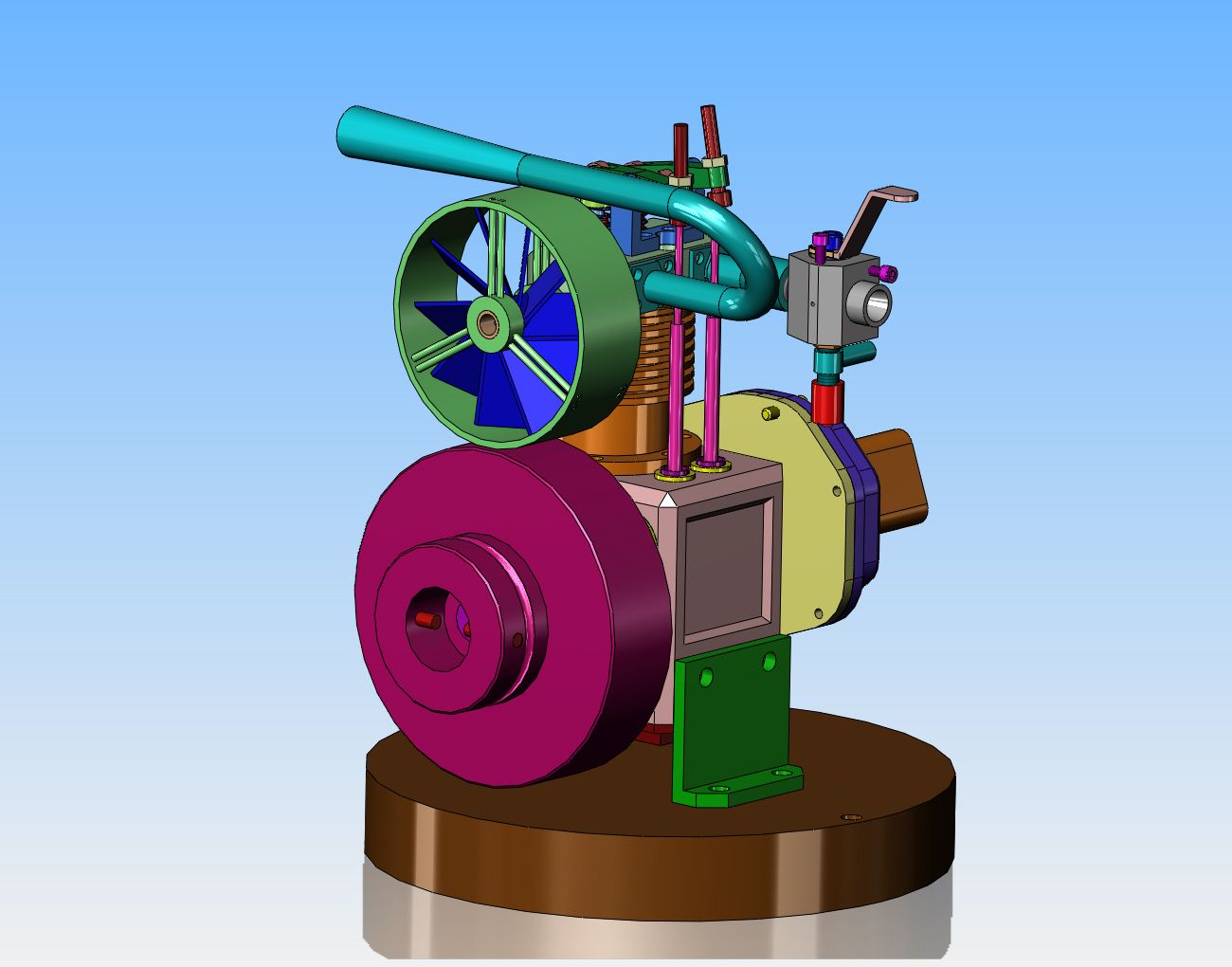Let's go back in time to where I first made cast iron piston rings. I ran them in for two hours, installed on the piston, and couldn't seem to get any compression. I was in a hurry to get the engine running, and needed to prove to myself that the no compression issue wasn't something other than the rings. I modified the piston to accept Viton o-rings, and moved on to a point where the engine was running. I have gradually improved the engine, until now it runs well and has so much compression I can barely turn it over by hand. Yesterday I pulled those two original rings out of their storage container, and had a good look at them with a magnifying glass. One ring had 3/4 of the surface worn from full contact with the cylinder wall, and one quarter which was still black from the heat treating process, so obviously not sealing at all in that area. The other ring however, had a nice even wear pattern all the way around the ring, with no black showing at all. To me, that says that it should have given me compression at the time. This morning I made a new aluminum piston, with the correct depth and width of ring grooves to suit the batch of 12 rings I originally made, and fitted the one good heat treated ring onto the piston. I have two heat treated rings left from the first batch of "good" heat treated rings, and I will install one of them in the other ring groove tomorrow. If I can find a piece of cast iron long enough in all my cut-offs tomorrow, I may make up a dummy cylinder and use the same 7/8" reamer as I used when I made my original cylinder. That should give me something to "play with" until I can judge if these rings are going to seal at all. If they do, its a very simple matter to pull the cylinder off the engine and swap pistons.









